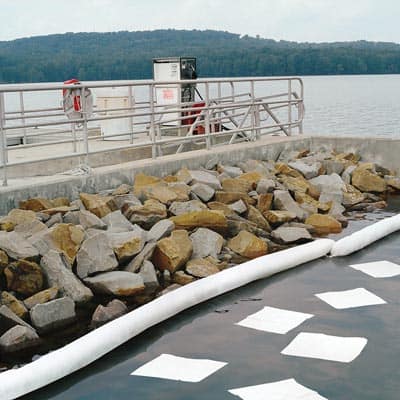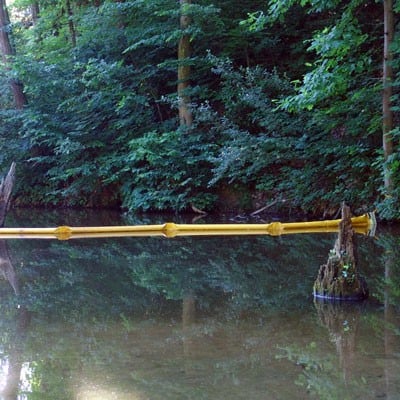Oil spills in bodies of water pose a significant threat to the environment and marine life. Quick and effective containment is essential to mitigate damage. One of the most effective tools used in spill containment is the non-absorbent boom. But how do these booms work, and why are they so crucial in managing oil spills?
In this article, we’ll dive into the mechanics of non-absorbent booms, their role in oil spill response, and why they are an indispensable tool in environmental protection efforts.
Understanding Spill Containment
Before we delve into the specifics of non-absorbent booms, it’s essential to understand the broader concept of spill containment. When oil is accidentally released into a body of water, it spreads rapidly over the surface, forming a thin layer called a slick. The goal of spill containment is to limit the spread of this slick to prevent further environmental harm.
The Role of Non-Absorbent Booms
Non-absorbent booms are floating barriers designed to contain and control the spread of oil on water surfaces. Unlike absorbent booms, which soak up oil, non-absorbent booms act as physical barriers. Their primary function is to prevent oil from spreading, making it easier to recover or disperse.

How Non-Absorbent Booms Work
Non-absorbent booms are constructed from durable materials that can withstand harsh marine conditions. They typically consist of a floatation device, a skirt, and a ballast. Here’s how each component contributes to the boom’s effectiveness:
Floatation Device
The floatation device is the part of the boom that remains above the water surface. It is usually made from foam or air-filled chambers that provide buoyancy. The floatation device ensures that the boom remains afloat, even in rough waters.
Skirt
The skirt is the part of the boom that hangs below the water surface. It acts as a barrier that prevents oil from passing underneath the boom. The skirt’s depth can vary depending on the specific application and environmental conditions.
Ballast
The ballast is a weight system that helps keep the skirt vertically oriented in the water. It ensures that the boom maintains its shape and effectiveness, even when subjected to currents and waves.
Deployment and Usage
Non-absorbent booms are deployed in various configurations depending on the spill scenario. Here are some common deployment strategies:
Containment
In a containment strategy, booms are arranged in a U or V shape around the oil slick. This configuration prevents the oil from spreading further and concentrates it in one area for easier removal.
Diversion
In a diversion strategy, booms are used to direct the oil towards a specific location, such as a collection point or a recovery vessel. This approach is useful when the spill is moving towards sensitive areas, such as shorelines or marine habitats.
Exclusion
Exclusion involves placing booms around vulnerable areas to protect them from incoming oil. This strategy is often used to safeguard coastlines, marshes, and wildlife sanctuaries.
Advantages of Non-Absorbent Booms
Non-absorbent booms offer several advantages in oil spill response:
Versatility
These booms are effective in a wide range of environmental conditions, including open seas, coastal areas, and rivers. Their versatility makes them a go-to solution for spill containment.
Reusability
Unlike absorbent materials that need disposal after use, non-absorbent booms can be cleaned and reused multiple times, reducing waste and cost.
Durability
Made from robust materials, non-absorbent booms can withstand harsh weather and rough seas, ensuring reliable performance during spill response operations.
Quick Deployment
Non-absorbent booms are designed for rapid deployment, which is crucial in emergency situations where time is of the essence.

Challenges and Considerations
While non-absorbent booms are highly effective, they are not without challenges. Here are some factors to consider:
Environmental Conditions
Strong winds, currents, and waves can impact the effectiveness of booms. In such cases, additional measures may be needed to ensure containment.
Maintenance
Regular maintenance and inspection are necessary to ensure that booms are in good condition and ready for deployment when needed.
Coordination
Effective spill response requires coordination among multiple agencies and stakeholders. Proper training and communication are essential to ensure successful boom deployment and operation.
Conclusion
Non-absorbent booms play a crucial role in oil spill containment by acting as physical barriers that prevent the spread of oil on water surfaces. Their versatility, durability, and reusability make them indispensable tools in environmental protection efforts.
Understanding how these booms work and the strategies for their deployment can enhance response efforts and minimize the environmental impact of oil spills. As we continue to prioritize environmental conservation, non-absorbent booms will remain a vital component of our spill response toolkit.
Take Action: Shop at Absorbents Online for Your Spill Containment Needs!
When it comes to effective spill containment, having the right tools is essential. At Absorbents Online, you can find a wide range of non-absorbent booms and other spill response products designed to help you manage oil spills efficiently. Don’t wait for an emergency—equip yourself with the best solutions available. Visit https://www.absorbentsonline.com today and ensure you’re prepared for any spill situation!